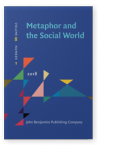Vol. 8:1 (2018) ► pp.64–80
“It’s like herding butterflies”
Simile-type comparisons and the interplay between similes and metaphors in radio discourse
This study focuses on simile in real language use. More specifically, it examines the explanatory power of similes in dialogic interaction where speakers are trying to bring their intimate experiences closer to others. The material under analysis comes from BBC Radio 4 “Woman’s Hour” programmes and is characterized by a relatively high simile frequency compared with other spoken genres, for example, academic lectures (Low, 2010). In view of this fact, the study aims to explore the discourse functions of similes in radio talk: are they one-off rhetorical figures which cater for local discourse needs only, or do they also form extensive explanations with more global discourse functions? Apart from examining how simile-type comparisons are employed in radio conversations, the study also explores the interplay between similes and metaphors as well as their complementary role in realizing communicative discourse goals.
Article outline
- 1.Introduction
- 2.Simile and metaphor: one and the same thing?
- 2.1Identifying metaphorical similes
- 2.2Similes in different text types
- 3.Radio talk genre
- 4.Similes in radio talk
- 4.1Simile as a risky communicative strategy?
- 4.2The interplay of metaphors and similes
- 4.3Explicit metaphorical comparisons and their role in discourse
- 5.Conclusion
- Notes
-
References
